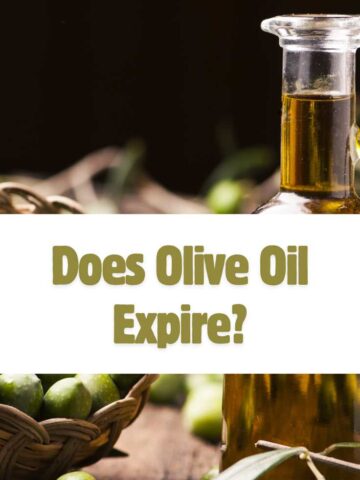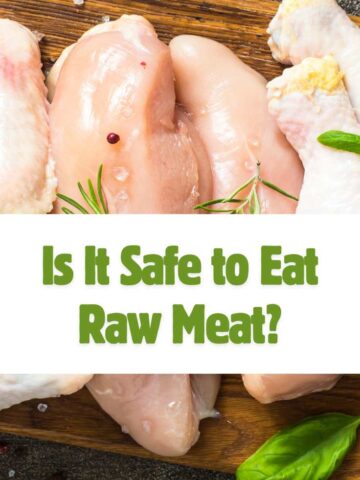Fats are often seen as hazardous or unhealthy, yet this is not totally correct in most cases. Fats are required for the proper functioning of your body. A healthy fat intake is essential for maintaining the health of your skin, organs, and endocrine system (which is responsible for the production and regulation of hormones) in good working order. Not all fats, on the other hand, are made equal.
There are four distinct kinds of fats:
- Monounsaturated fats
- Polyunsaturated fats
- Saturated fats
- Trans fatty acids
Each form of fat has a slightly distinct molecular structure. When heated to room temperature, saturated fats solidify more readily than unsaturated fats because of their chemical makeup, while unsaturated fats are constructed in a manner that permits them to remain liquid at ambient temperature. Generally speaking, saturated fats such as butter and bacon grease are used, whereas unsaturated fats such as olive oil are used.

It is because of these changes in the chemical makeup of fats that they have such a wide range of health impacts. Even while ingesting little amounts of fats is usually not harmful to one's health, consuming excessive amounts of saturated or trans fats is generally regarded to be harmful.
Why You Should Limit Your Consumption of Fats
In the majority of individuals, saturated fats seem to boost LDL cholesterol, sometimes known as "bad" cholesterol. These fats promote the production of more LDL cholesterol while also decreasing the number of receptors in your body that remove this kind of cholesterol from your body.
High LDL cholesterol levels might have substantial and harmful consequences for your health. One of the most significant causes of major risk factors for heart disease is high LDL cholesterol. This is the sort of cholesterol that contributes to the accumulation of plaque in your arteries, which is a leading cause of heart attacks. Additionally, plaque in your arteries might rupture and travel to your brain, resulting in strokes.
The same is true for trans fats, which are partly hydrogenated fats that boost your LDL cholesterol while simultaneously decreasing your "good" HDL cholesterol level. To be more specific, the Food and Drug Administration has made efforts to eliminate artificial trans fats from processed foods since they are judged to be harmful.
Mono- and polyunsaturated fats, on the other hand, have been shown to reduce the quantity of harmful cholesterol in the body. To prevent heart disease and stroke, it is suggested that you reduce saturated fats to less than 10% of your daily calorie intake and replace as much saturated fats as possible with unsaturated fats.
Foods Containing Saturated Fatty Acids
If you want to eat more healthfully, cutting less on saturated fats is a good place to start. Here are six high-fat foods to avoid that should be avoided since they are rich in saturated fats.
Jump to:
1. Meats that are high in fat
Foods high in saturated fat, such as fatty meats, are among the most harmful. A 4-ounce serving of 90 percent-lean ground beef has 5 grams of saturated fat, which accounts for 23 percent of your daily recommended intake of saturated fat.
2. The Skin of Poultry
While most chicken is low in saturated fats, this is not the case for the skin of the bird. The saturated fat content of an ounce of chicken skin is 2.26 grams per ounce. If you're trying to reduce your consumption of saturated fats, you should avoid eating the skin.
3. Heavy Cream (optional)
After being left to rest, the cream is created from the fat and liquids that rise to the surface of unhomogenized milk and congeal. One hundred grams of this high-fat beverage has about one-quarter of saturated fat, and a 100-gram portion contains more than 23 grams of saturated fat.

4. The use of butter
Because butter is formed from the lipids contained in heavy cream, it should come as no surprise that it has a high concentration of saturated fat. Unsaturated fats are found in high concentrations in a one-tablespoon serving of butter (about 14 grams).
5. Cheddar cheese
Different types of cheese have varying amounts of fat in them. Soft cheeses have a greater fat content than hard cheeses, with brie and Camembert both carrying more than 17 grams of saturated fats per 100-gram serving (brie has more than 17 grams, Camembert has more than 17 grams).

6. Bacon
Bacon, like high-fat cuts of beef, is a key source of saturated fats in your diet. You're ingesting around 12.6 grams of saturated fats for every hundred grams of bacon that you consume.
Low-Fat and Low-Carbohydrate Alternatives
It is feasible to reduce your saturated fat consumption by substituting unsaturated fats for saturated fats in your diet. These substitutes are wonderful, but they do not have the same amount of saturated fat as the original.
1. The first step is to choose lean beef. Trimming the excess fat from your beef or draining hamburger meat may help you cut down on the amount of fat in your dish.
2. Low-Fat Cheese: Cottage cheese and hard cheeses are often lower in saturated fats than other types of cheese. 3. A single serving of cottage cheese (one hundred grams) has less than one gram of saturated fat.
3. The use of skin-free poultry reduces the amount of fat in a chicken breast, particularly saturated fat, by removing the skin from the breast.
4. In addition to being practically fat-free, skim milk is also a more nutritious option to cream in your morning coffee.
5. Olive Oil: This butter substitute is nearly completely composed of unsaturated fats, making it a fantastic substitute while you're cooking.
In comparison to pig bacon, turkey bacon has just one-third the saturated fats per serving when compared to hog bacon.




